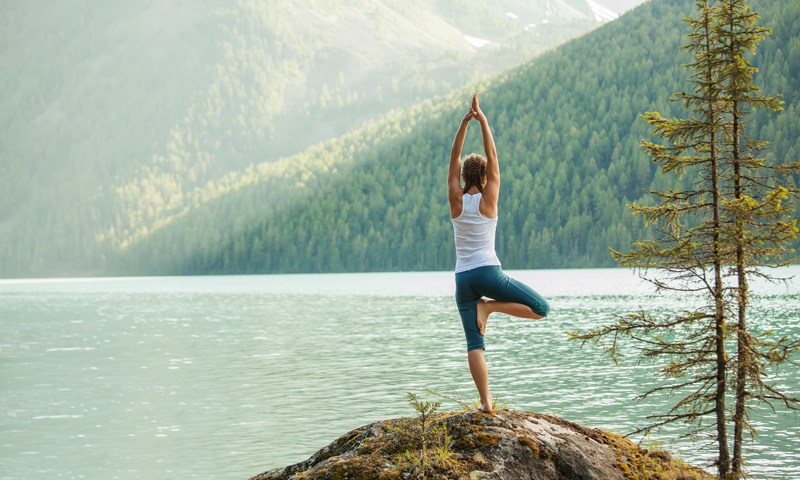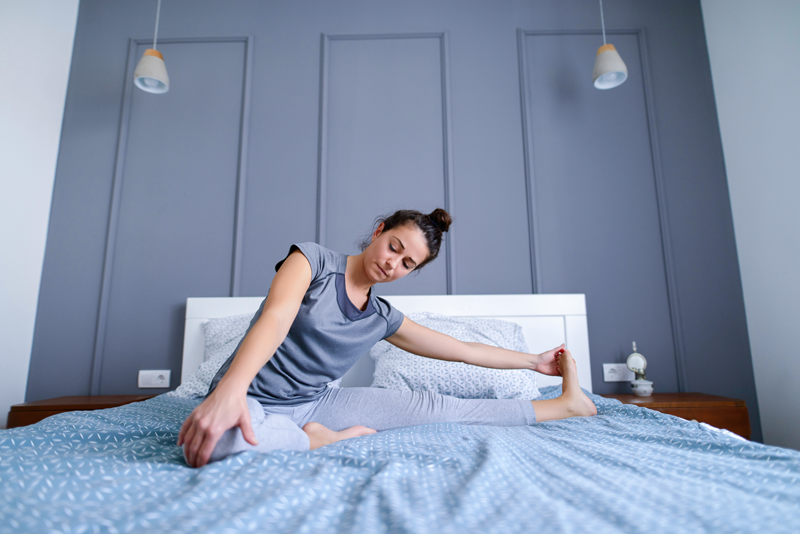
What is Your Third Eye Chakra?
26th July 2019
Yoga Poses to Avoid When Pregnant
9th August 2019How Does Yoga Help You Stay Young?

Hitting the yoga mat regularly can help you to stay looking and feeling young. All aspects of the practice have been designed with health in mind – whether that is emotional, physical, or spiritual. But how exactly does it do this? In this article, we explore how yoga helps you to stay young.
Keeps Fascia Healthy
If you’re a regular yogi, you’ve probably heard of fascia. Best described as the tissue the holds your body together, fascia is found around the ligaments, tendons, muscles, bones and organs. The word ‘fascia’ is Latin and means “band”. Essentially, the connective tissue helps to attach, stabilise and enclose parts of the body beneath the skin. To work optimally, fascia needs to stay supple and springy. Below, we explore how yoga helps to keep fascia healthy.
- Increases flexibility and range of movement.
- Reduces pain and inflammation.
- Helps to keep fascia supple to prevent injury.
- Strengthens fascia to provide ligament support.
To keep fascia healthy, it’s also important to stay hydrated. Alongside your yoga practice, be sure to drink enough water throughout the day to keep fascia healthy, flexible, and pain-free.
Keeps Muscles Strong and Flexible
Regular yoga practice keeps the muscles strong and flexible. As you move through the poses, your muscles may move in ways they’ve never moved before. At first, this may be uncomfortable. However, the stretches will become easier with time and your body will thank you for it! As we age, the muscles become weaker and certain movements may seem tricky. With yoga, your muscles will become stronger as you use your body weight as resistance.
It’s no secret that yoga keeps you flexible. Alongside easier movement, there are many benefits of flexibility including decrease of joint pain, better posture and less chance of future injuries. With this in mind, increased flexibility can help you feel young and healthy.
Renews the Brain
According to a study by the National Centre for Complementary and Alternative Medicine, yoga can increase grey matter in the brain. Grey matter contains a variety of brain components including synapses and capillaries. The matter develops in parts of the brain involved with sensory perception and muscle control. According to the study, those who practised yoga developed more grey matter in their brain than those who didn’t. Participants that practised multiple times per week developed the highest amount of grey matter. Grey matter is essential for optimal brain function. The parts of the brain affected include:
- The superior parietal cortex – the area involved in directing attention.
- The somatosensory cortex – the area which contains a mental map of the body.
- The hippocampus – the area which is implicit in long-term and short-term memory.
- The superior parietal cortex – the area which is involved in directing attention.
- The posterior cingulate cortex – the area which is key to our concept of self.
Research has shown that certain medical conditions deplete grey matter in the brain. One of these conditions is long-term pain. With this in mind, yoga is particularly beneficial for chronic-pain sufferers as it can prevent or reverse the damage to grey matter.
Teaches You How to Breathe
Yoga teaches you to breathe properly and to control your breath with certain breathing practices. One of the most popular is ‘Nadi Shodhana’, a technique where you close your right nostril with your thumb, inhale through your left nostril, block the left nostril with your little finger and exhale through the right nostril. The process is then repeated for a few minutes. This technique balances the brain and allows you to see if either of the nostrils is blocked. Yoga also teaches you to breathe through various asanas. Asanas that open the heart and chest allow you to take deeper breaths and fill the diaphragm with fresh, clean air.

Improves Vital Signs
The four main vital signs are heart rate, blood pressure, body temperature and breathing. All four of these give an insight into whether your body is maintaining life-sustaining functions. Keeping these vital signs healthy is the key to staying young and fit. Thankfully, yoga can help with this.
According to a recent study, those who practice yoga twice per week experienced a larger drop in blood pressure than participants who followed a special diet. All participants in the study had hypertension.
Studies have also found that yoga can:
- Decrease heart rate.
- Keep blood pressure constant.
- Synchronise cardiovascular rhythms.
There are two yoga poses in particular that improve your vital signs: Child’s Pose and Corpse Pose. Both poses help you to reconnect with your breathing and allow the muscles to relax. Below, we explore how to practice them.
Child’s Pose
To practice Child’s Pose, begin by kneeling on the mat. Next, inhale and sit back on your heels. As you breathe out, walk your hands out in front of you until your chest is touching the ground. If it’s comfortable, rest your forehead on the mat and relax your arms by your sides. You are in Child’s Pose. Hold the asana for around 30 seconds.
Corpse Pose
Corpse Pose is super easy to practice! All you need to do is lie down on your back and relax your arms by your sides. If practised at the end of your yoga practice, the asana can be used to reflect on the sequence and relax the mind before heading home.
Provides Inner Peace
Today, mental illness is a common complaint – particularly amongst the older generation. While you may assume that mental illness has little to do with staying young, preventing its onset can add years onto your life.
Research shows that yoga has a positive effect on mental health. The Harvard Medical School suggests that yoga can:
- Relieve symptoms of trauma.
- Decrease sensitivity to pain.
- Keep the stress response system healthy.
- Keep the body calm during times of emotional distress.
In Summary
There’s no doubt about it, practising yoga regularly can keep your body young, happy, and healthy. If you’re new to yoga, it’s best to attend a local class before practising at home. This way, you can learn the poses from an experienced instructor. Before your first class, pack a yoga bag with a mat, a light snack, and a fresh bottle of water. Providing that you’ve got those things, you’ll be good to go!

